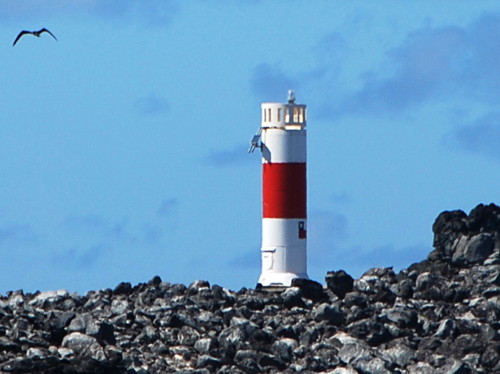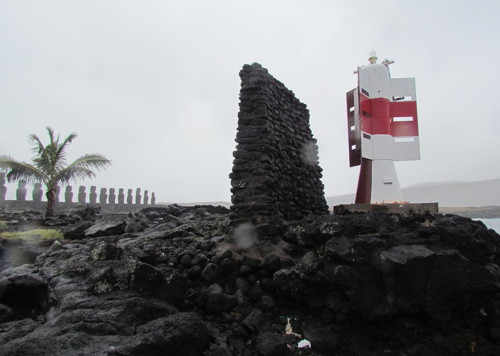The Republic of Chile administers three groups of small islands in the eastern South Pacific Ocean, including several of the most remote and least well known islands of the world. These islands are known officially as the Islas Esporádicas (Sporadic Islands) or as Insular Chile. This pages lists the lighthouses built on those islands. The only inhabited islands are Easter Island (Isla de Pascua), the easternmost inhabited island of Polynesia, and Isla Robinson Crusoe in the Juan Fernández Islands. All the islands are administered as part of the Valparaíso Region.
There are no traditional lighthouses on these islands but there are some interesting minor aids to navigation. This page includes several of these lightbeacons.
The Spanish word for a lighthouse is faro; isla is an island, cabo is a cape, punta is a promontory or point of land, péñon is a rock, arrecife is a reef, bahía is a bay, ría is an estuary or inlet, estrecho is a strait, río is a river, and puerto is a port or harbor.
Chile's lighthouse agency, the Servicio de Señalización Marítima, is now an office within the ministry known as Directemar (Dirección General del Territorio Marítimo y Marina Mercante).
ARLHS numbers are from the ARLHS World List of Lights. Admiralty numbers are from volume G of the Admiralty List of Lights & Fog Signals. U.S. NGA List numbers are from Publication 111.
- General Sources
- Online List of Lights - Chile - West Coast
- Photos by various photographers posted by Alexander Trabas.
- Lighthouses in Chile
- Photos by various photographers available from Wikimedia.
- World of Lighthouses - Chile
- Photos by various photographers available from Lighthouses.net.
- Google Maps - Easter Island, Juan Fernandez Islands, and Desventuradas Islands
- Satellite views of the islands.


